Paul O'Connor's Blog
August 17, 2025
Ritual GrindsEveryone knows my shtick, so just like the b...

Ritual Grinds
Everyone knows my shtick, so just like the boss doing a FS flip at a demo, I am going to give you what you want. That being, a heady melange of ritualised skateboarding, mythic sculpture, and some grey space simulacra.
Returning to my theme of sacred skateboarding the Spanish ‘Grind to Grind’ collective have got their own little skate fetish going on. While BA. KU. have the Jersey Barrier, Grind to Grind devote themselves to trucks. Their DIY park has coping made of trucks, and they also melt down old trucks and craft them into rails. Why not make your slides grind too?
In their latest video offering they have crafted a giant concrete truck replete with an axle made out of the many old trucks. Here we delve into the simulacra of the truck. It is at once a representation of a real truck, crafted out of… trucks. Its core material is concrete and is thus the primary material of which trucks grind. This concrete being grey is therefore both an overt feature of our discussion and an ambiguous entity, a grey space. It manifests as object, substance, context.
The skateboarding is not merely skateboarding. It is ritualised. A salutation to the act of skateboarding (always) and the object we profess our love to. Act, object, and in this case representation of the facilitator. The fact that Grind to Grind have an altar at their DIY, where trucks and broken boards are burnt is an exemplar. I really don’t need to say more. just watch the video.
February 14, 2025
New Research: Jung, Sound and a boom in skate academia
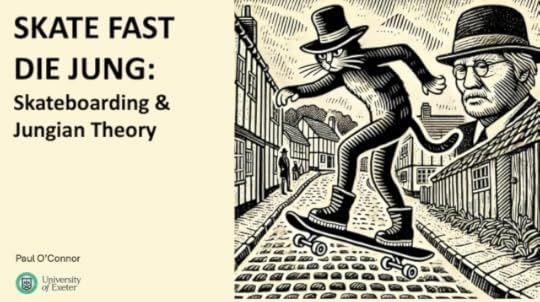
 New Research: Jung, Sound and a boom in skate academia
New Research: Jung, Sound and a boom in skate academiaThe end of the 2024 and the start of 2025 coincided with the publication of two pieces of my research. The first, an article on tackling conceptual problems in skateboarding using Jungian philosophy was a personal odyssey. I’ve been reading Jung for the past 18 months. Initially this was a personal interest for fun trying to work out some ontological questions. Then I realised it was speaking to some impasse in my research. I sat down one Saturday in August and wrote a paper on Jung over the course of two days. Quite a remarkable experience where all the ideas and notes I had just flooded out. I sent the paper off to the journal ‘Sports, Ethics, and Philosophy’ and it went through review very smoothly and was Published at the end of November. This is a quick turn around in academia.
By contrast the collaborative paper on 'the skater’s ear’ comes form research dating back to 2022. The final paper was drafted in October 2023 and it was finally published January 2025. This paper twists the notion of ’the skater’s eye’ to the notion of sound and how skaters hear their environment. It is a fun piece of work that draws heavily from very focussed interviews that wrestled with what the experience and meaning of sound is.
It is a good feeling to have two vibrant pieces of work come out so close together. However, this is all part of a much more interesting dynamic. Frequent co-author Brian Glenney released his annual review of skateboarding studies in Farran Golding’s the newly minted Skate Bylines. This is a remarkable document giving an overview of all academic work in skateboarding over the last year. It shows that there is enormous interest and a diverse array of work in this realm. There are conferences, edited collections, special issues…
It seems Brian has his work cut out for the next installment as another co-author and collaborator Sander Holsgens has just published an edited collection of new work with Adelina Ong. Skate / Worlds has some incredibly original work that looks at varied skate scenes, including social enterprises, the Bryggeriet Skate school, and Gestalt therapy. It is open access and free to download, but as I have found downloading it is much easier that actually putting it down.
Skaters often talk about how much good video content there is - too much. It is hard to keep up and see everything. It is also hard to give everything you do watch the focus that used to be the hallmark of VHS releases.
Skate writing has now entered that phase and Farran’s Skate Bylines is a huge help in this regard. My weekly staple has to be Cole Nowicki’s Simple Magic. Then there are all the podcasts to catch up on. There is so much that I have sought to post less and less on social media. My return to Tumblr is mostly a journalling process today. A punctuation mark in thoughts and reflections.
So, on to the the Jung paper and the notion of the Trickster archetype. My favourite example of the Trickster is 'Puss in Boots’ a bizarre tale of a mercurial talking cat that simply wants to furnish his hard of luck owner with wealth and status. The cat is absurd and yet full of cunning and magic. Other Trickster’s in popular culture have the same farcical conceit, they are a joke (Bart Simpson, Deadpool, Harley Quinn, Jack Sparrow, Loki, Willy Wonka, Scheherazade…) but also transformative characters that teeter on the edge of chaos and transcendence. We are always wondering are they a fool, hero or a god.

I was able to present my work on Jung and Skateboarding to the University SAC student society. It was my first time talking about the topic as I had only really read and written up to this point. I felt somewhat of a trickster forging these links. But the students came up with the name for the talk 'Skate Fast Die Jung’ which was comical too. I also now realise that the trickster was present when I did the sound research. More than in any other interviews I had ever conducted, I was deliberately confrontational, playing devil’s advocate, concealing some information and gradually letting more be known as our conversations developed. It was a deliberate intent as I knew that the type of information I needed (reflections on sound) were quite abstract and needed a series of prompts and stimulus to uncover. Most of the people interviewed expressed some curiosity like 'how are we going to talk about this?’
Just as writing about skateboarding can be a difficult as trying to land a trick, figuring out how to research it comes with its own set of complications. But recent publications demonstrate quite clearly that folk are working that out.
May 29, 2024
New Article - Conceptualising Grey Spaces in Skateboarding
This was one of those articles that just flowed. I was asked to do a talk for the SSHRED seminar series which is a exciting initiative working on issues of the environment and skateboarding. I thought I would take the opportunity to clarify the grey spaces concept I had generated in a previous paper ‘Skateboarding in the Anthropocene’ and then it turned into a mission statement about theory and method in skateboard studies. Here is the link to the article…
Sage Journals: Your gateway to world-class research journals
The article is published in the International Review for the Sociology of Sport and is free to access.
You can also check out the video of the seminar that was the catalyst for the paper below.
April 2, 2024
Article from The Conversation on our Chicano Park research.
Urban wellbeing is increasingly tied to what urban planners term “green” and “blue” spaces: the parks and waterfronts that our towns and cities may include. Residents are also encouraged to leave the city altogether, to seek out the healthy calm of forest bathing, fell running or cold water swimming.
The potential of play within the urban environment, however, is often overlooked.
Skateboarders have long been invested in what I call “grey” space: the overlooked corners, edges and surfaces of the built environment. Skateboard magazines and videos routinely explore the social and architectural histories of sets of stairs and stone benches.
These spots, largely invisible to the general public, are richly symbolic. In seeing them as ramps and launchpads, skaters transform unremarkable bits of the city into ritual places of magic and wonder.
Recent research conducted with my colleague, Andrea Buchetti, shows that skateparks are sites of unstructured play and community, as well as remembrance and ritual. Otherwise banal and polluted locations are afforded layers of meaning and depth.
Skatepark memorialisationThe Chicano Park skatepark in San Diego is nestled below the imposing, blocky concrete columns of the on-ramps for the city’s Coronado bridge.
Built in 2015, the skatepark features four vibrant murals (by artists including Ricardo Islas) that draw on both the indigenous heritage of this ancient northern Mexican region and skateboard iconography. In memory of lost friends, local skateboarders build shrines at the foot of the paintings using broken skateboards, rocks, cacti and cut flowers.
The five-lane highway bridge above it stands 61 metres tall, allowing safe passage for ships bound to the nearby naval base. Completed in 1969, it links downtown San Diego with the smaller city of Coronado across San Diego Bay.
The space beneath the bridge has long been contested. When built, its route divided a longstanding Mexican American neighbourhood, Barrio Logan, that had already been disrupted by the construction of the Interstate 5 in 1963. Over 5,000 homes and businesses were destroyed in the process.
The state had promised the community a park by way of compensation. But on April 22 1970, Mario Solis, a local student, noticed bulldozers where the park should be, and found out the city was, in fact, constructing a highway patrol base there.
At Solis’s urging, more than 250 residents gathered with shovels and pickaxes to reclaim the land. They planted cacti and trees to create a communal park. After three months of protest, the city conceded to work with the community, and Chicano Park was officially established.
Local artist Salvador Torres was one of the people who lost their homes. In 1973, he galvanised the community into painting murals on the imposing chunks of concrete built in their stead. It was a form of creative resistance. The motifs referenced the cultural heritage of this ancient northern Mexican region, from Aztec symbolism to indigenous plants and beasts, and also Mexico’s colonial experience and revolutionary struggles.
The park is now a protected historic space and landmark. People gather there for annual celebrations on April 22.
Skateboarding as culture and communityResearch has long shown the connection between sport and religion. Fans make pilgrimages to stadiums and worship athletes like gods.
Just as a football fan might worship at Wembley stadium in London, a specific neighbourhood curb might hold great significance because of a connection to a famous skater or a historic event. I have shown how skateboarding functions as a lifestyle religion. In the way they observe, perform and organise their communal activity, skateboarders derive spiritual expression and identity from both the physical act of skateboarding and the places in which it is conducted.
Some skateparks have dedicated plaques and permanent memorials designed into skateable features. When legendary San Francisco skateboarder and chief-editor of Thrasher magazine, Jake Phelps, died in 2019, a sculptor in Los Angeles made a concrete tombstone feature to install in the Lower Bob’s DIY skatepark in Oakland. He mixed some used dental floss Phelps had left behind into the concrete. “We don’t got his cremated body,” the artist told Thrasher, “but we got pretty much all the DNA we’re gonna need.”
London’s Skateboard Graveyard on one of the supports of Hungerford Bridge, on the South Bank, is another salient example. For years now, old boards have been thrown down from the Golden Jubilee footbridge in memory of Timothy Baxter, one of two skaters who were attacked and thrown into the river Thames in 1999.
Baxter died as a result and the juvenile attackers were convicted of manslaughter. Many of the skateboarders who take part in the ritual might not know that this is how it began, yet they persist in offering their broken boards to the site.
RIP epitaphsIn 2023, the skatepark in Sacramento’s Regency Park was renamed in honour of Tyre Nichols, a skateboarder who was beaten to death by police officers in Memphis, Tennessee.
Australian graphic design expert Dan Johnston has identified RIP epitaphs as one of the most common types of skateboarding-related graffiti. He cites messages he has noted on the steel ramps and concrete bumps of skater desinations in Singapore, Paris and south Australia – RIPs and Miss Us scrawled in white correction fluid, marker pen or spray paint.
Despite skateboarding’s recent ascent to Olympic status, for many skateboarders it is more a culture – or even a cult – than a sport. It brings diverse people together for unsanctioned play, recasting obstacles – an impassable buckled road in Wiltshire, say – as toys and tools.
In their provocative curves and surfaces, skateparks embody this creativity. They mimic the city beyond, showing how the built environment cannot just be conceived of as a framework for economic activity. Grey space – and grey times – can be transformed if communities, and the DIY cultures they give birth to, are allowed to flourish in the city.
March 31, 2024
New article published with Andrea Buchetti on Chicano Park’s Skateboard Murals. This draws upon the…
New article published with Andrea Buchetti on Chicano Park’s Skateboard Murals. This draws upon the ways in which the murals have become sites of memorial for local skaters who have died in the community.
Open Access and free to download… here
https://www.tandfonline.com/doi/full/10.1080/01490400.2024.2325484
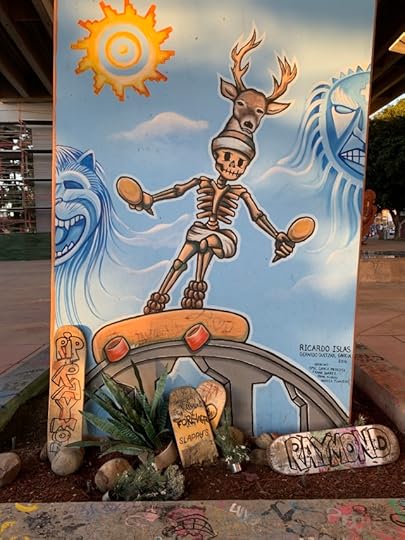 ALT
ALT ALT
ALT
February 24, 2024
I gave talk for the SSHRED seminar series in early February conceptualising ‘Grey Spaces’ in…
I gave talk for the SSHRED seminar series in early February conceptualising ‘Grey Spaces’ in academic work on skateboarding. This coincides with a Special Issue we are planning for Leisure Studies Journal. The Call for Papers can be found here…
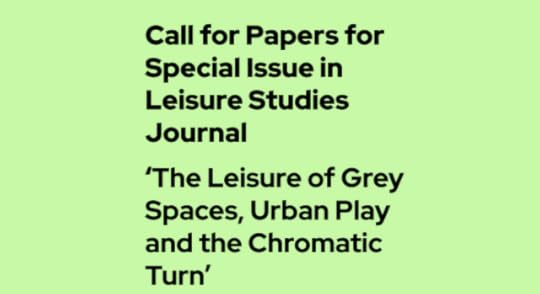
September 3, 2023
Dean Lane Fun Day, Bristol Saturday September 2nd 2023

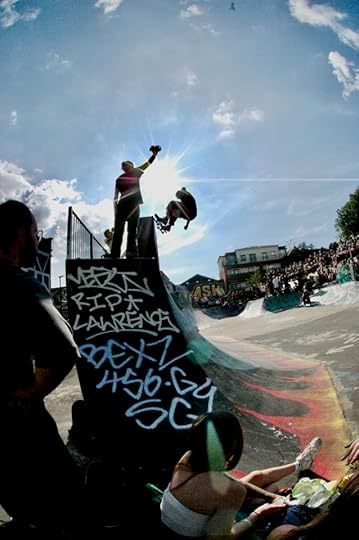
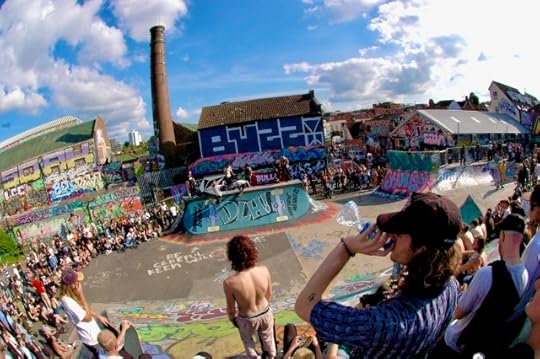
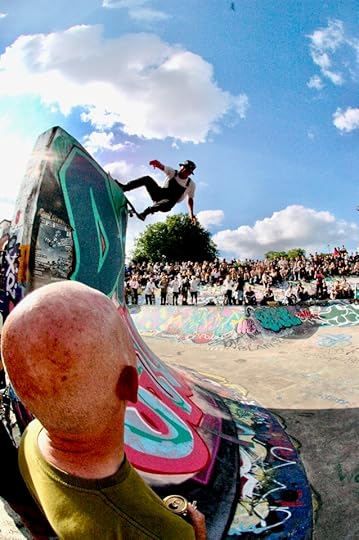
Dean Lane Fun Day, Bristol Saturday September 2nd 2023
August 7, 2023
First of all, the egalitarian ethos and pronounced color-blindness of pugilistic culture are such…
First of all, the egalitarian ethos and pronounced color-blindness of pugilistic culture are such that everyone is fully accepted into it so long as he submits to the common discipline and “pays his dues” in the ring.
Loïc Wacquant Body and Soul: Notebooks of an apprenctice boxer. (2004) Pg 10
Loïc Wacquant Body and Soul: Notebooks of an apprenctice boxer. (2004) Pg 10
First of all, the egalitarian ethos and pronounced color-blindness of pugilistic culture are such that everyone is fully accepted into it so long as he submits to the common discipline and “pays his dues” in the ring.
Loïc Wacquant Body and Soul: Notebooks of an apprenctice boxer. (2004) Pg 10
August 2, 2023
“I came across Sidewalk Surfer magazine - a leading British skateboarding publication at the time. I…
“I came across Sidewalk Surfer magazine - a leading British skateboarding publication at the time. I was drawn to the image on the cover of a man mid-trick hovering above the ground. He had been photographed in the glow of a streetlight in an urban space empty of people. I saw the image as extremely seductive; it suggested magic, a sort of urban alchemy, and it represented an expansive freedom and open space. I bought the magazine and asked my parents for a skateboard for my 16th birthday along with a 411 video about ‘How to Skateboard’.”
Dani Abulhawa. Skateboarding and femininity. Pg12



